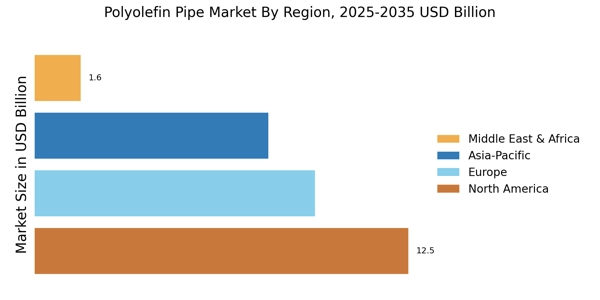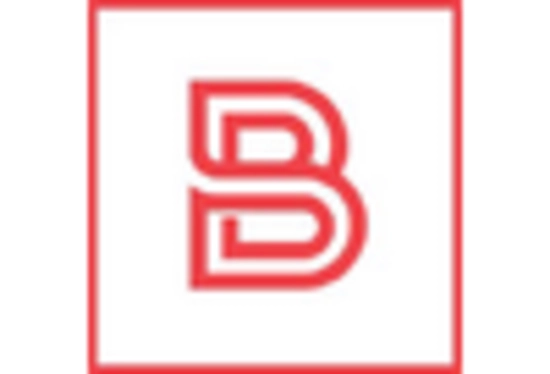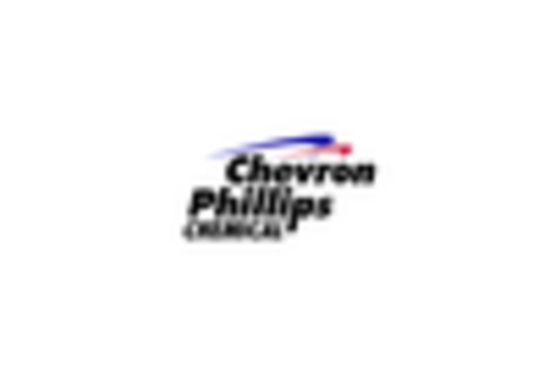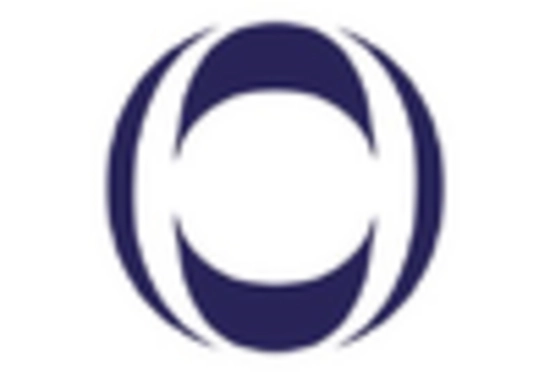Growth in Construction Activities
The resurgence of construction activities across various sectors is significantly impacting the Polyolefin Pipe Market. With a notable increase in residential, commercial, and industrial projects, the demand for piping solutions is on the rise. Data suggests that the construction sector is expected to witness a compound annual growth rate (CAGR) of over 5% in the coming years. Polyolefin pipes, with their lightweight and flexible properties, are increasingly favored for new installations and renovations. This growth in construction not only boosts the demand for polyolefin pipes but also encourages innovation in manufacturing processes, thereby enhancing the overall market landscape.
Rising Demand for Water Infrastructure
The increasing need for efficient water management systems is driving the Polyolefin Pipe Market. As urbanization accelerates, the demand for reliable water supply and drainage systems intensifies. According to recent data, investments in water infrastructure are projected to reach substantial figures, indicating a robust growth trajectory. Polyolefin pipes, known for their corrosion resistance and durability, are becoming the preferred choice for municipalities and private sectors alike. This trend is further supported by government initiatives aimed at enhancing water quality and accessibility. The Polyolefin Pipe Market is likely to benefit from these developments, as stakeholders seek sustainable solutions to meet the growing water demands.
Environmental Regulations and Standards
The implementation of stringent environmental regulations is shaping the Polyolefin Pipe Market. Governments are increasingly mandating the use of eco-friendly materials in construction and infrastructure projects. Polyolefin pipes, being recyclable and less harmful to the environment, align well with these regulations. As industries strive to comply with environmental standards, the demand for polyolefin pipes is expected to rise. Recent statistics indicate that the market for sustainable building materials is expanding, which bodes well for the Polyolefin Pipe Market. This regulatory push not only promotes the use of polyolefin pipes but also encourages manufacturers to innovate and improve their product offerings.
Expanding Applications in Various Industries
The versatility of polyolefin pipes is contributing to their growing presence in multiple industries, thereby influencing the Polyolefin Pipe Market. These pipes are increasingly utilized in sectors such as agriculture, telecommunications, and oil and gas, owing to their adaptability and performance. For instance, in agriculture, polyolefin pipes are used for irrigation systems, enhancing water efficiency. Market analysis reveals that the agricultural sector alone is expected to account for a substantial share of the polyolefin pipe demand. This diversification of applications not only broadens the market scope but also encourages manufacturers to tailor their products to meet specific industry needs, further driving growth in the Polyolefin Pipe Market.
Technological Innovations in Pipe Manufacturing
Technological advancements in the manufacturing of polyolefin pipes are propelling the Polyolefin Pipe Market forward. Innovations such as improved extrusion techniques and enhanced polymer formulations are leading to the production of pipes with superior performance characteristics. These advancements result in pipes that are not only more durable but also more cost-effective. Market data indicates that the adoption of advanced manufacturing technologies could reduce production costs by up to 20%, making polyolefin pipes more competitive against traditional materials. As manufacturers continue to invest in research and development, the Polyolefin Pipe Market is likely to experience significant growth driven by these technological improvements.


















Leave a Comment